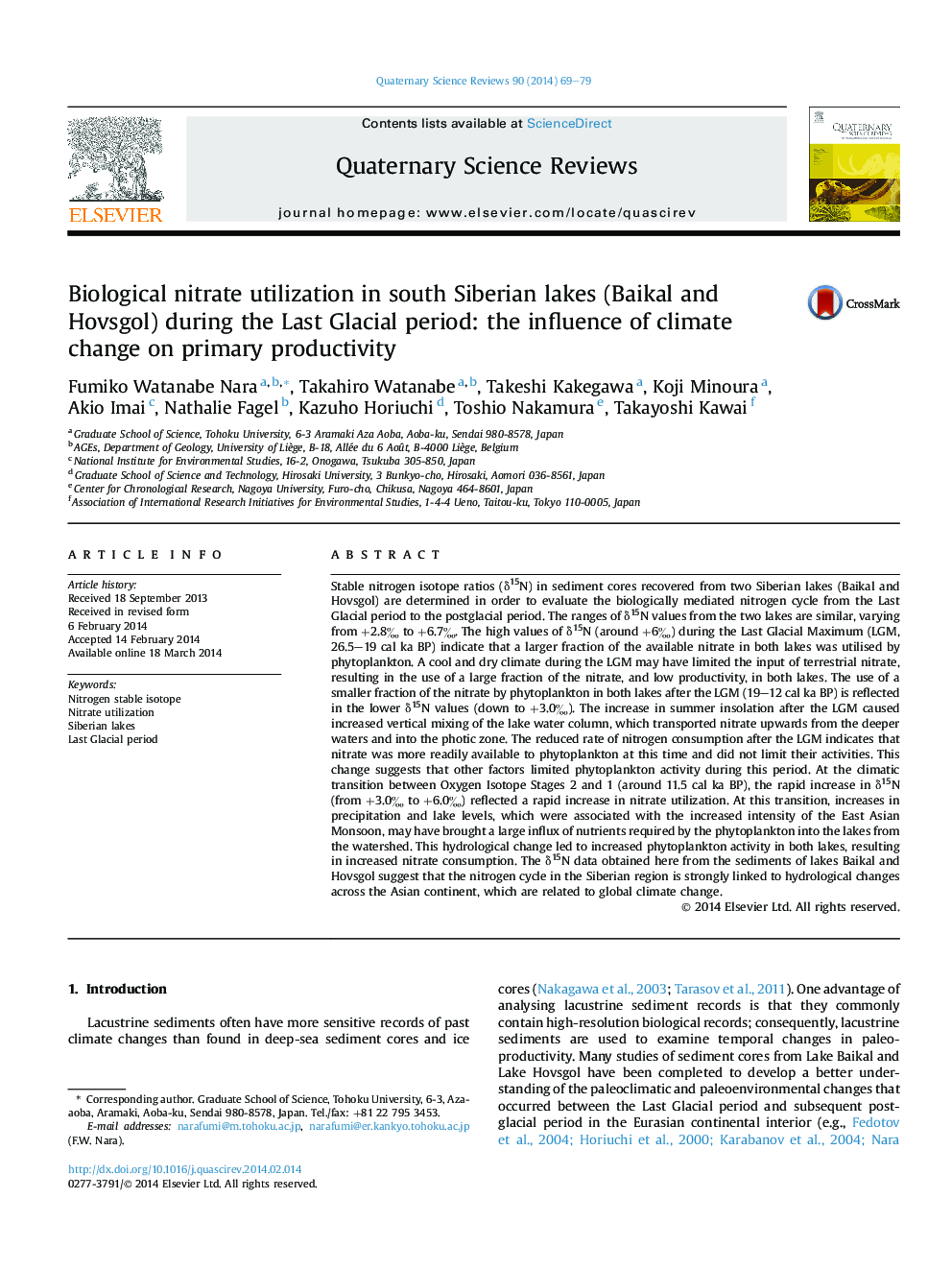| کد مقاله | کد نشریه | سال انتشار | مقاله انگلیسی | نسخه تمام متن |
|---|---|---|---|---|
| 4736548 | 1640844 | 2014 | 11 صفحه PDF | دانلود رایگان |
• Climate impacts on phytoplankton in Siberian lakes for 33 cal ka BP were recovered.
• We measured stable nitrogen isotope of Lake Baikal and Hovsgol sediment cores.
• This is the first report of stable nitrogen isotope of Lake Hovsgol.
• Nitrogen isotope showed the past nitrate utilization changes by phytoplankton.
• Changes of the nitrate utilization were controlled by climatic changes.
Stable nitrogen isotope ratios (δ15N) in sediment cores recovered from two Siberian lakes (Baikal and Hovsgol) are determined in order to evaluate the biologically mediated nitrogen cycle from the Last Glacial period to the postglacial period. The ranges of δ15N values from the two lakes are similar, varying from +2.8‰ to +6.7‰. The high values of δ15N (around +6‰) during the Last Glacial Maximum (LGM, 26.5–19 cal ka BP) indicate that a larger fraction of the available nitrate in both lakes was utilised by phytoplankton. A cool and dry climate during the LGM may have limited the input of terrestrial nitrate, resulting in the use of a large fraction of the nitrate, and low productivity, in both lakes. The use of a smaller fraction of the nitrate by phytoplankton in both lakes after the LGM (19–12 cal ka BP) is reflected in the lower δ15N values (down to +3.0‰). The increase in summer insolation after the LGM caused increased vertical mixing of the lake water column, which transported nitrate upwards from the deeper waters and into the photic zone. The reduced rate of nitrogen consumption after the LGM indicates that nitrate was more readily available to phytoplankton at this time and did not limit their activities. This change suggests that other factors limited phytoplankton activity during this period. At the climatic transition between Oxygen Isotope Stages 2 and 1 (around 11.5 cal ka BP), the rapid increase in δ15N (from +3.0‰ to +6.0‰) reflected a rapid increase in nitrate utilization. At this transition, increases in precipitation and lake levels, which were associated with the increased intensity of the East Asian Monsoon, may have brought a large influx of nutrients required by the phytoplankton into the lakes from the watershed. This hydrological change led to increased phytoplankton activity in both lakes, resulting in increased nitrate consumption. The δ15N data obtained here from the sediments of lakes Baikal and Hovsgol suggest that the nitrogen cycle in the Siberian region is strongly linked to hydrological changes across the Asian continent, which are related to global climate change.
Journal: Quaternary Science Reviews - Volume 90, 15 April 2014, Pages 69–79
